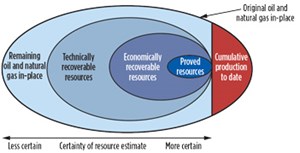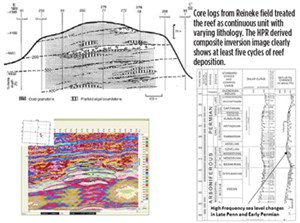What's new in exploration
Not here: Given the current climate in the Republic of South Africa, where their constitution and laws do not seem to mean anything to the politics in power, oil investors will be reluctant to conduct exploration, when return on capital, royalty rights and long-term relationships remain in doubt. Namibia, which is much more stable, unfortunately had a recent offshore disappointment. While today it does not look promising, more seismic and a few more wells are needed.
Where else? Try the opinion compiled for the U.S. by the CIA. Can we trust this source? Actually, yes. There is significant input from oil companies around the globe. If you are looking to explore somewhere, stay above their Zero Line. I think they may be wrong about offshore #127 (Ireland) and #141 (Greenland): https://www.cia.gov/library/publications/the-world-factbook/rankorder/2241rank.html.

Then there is the opinion of OPEC. Are they sending the world a message? I think they left out Texas/North Dakota in percentages of world reserves: http://www.opec.org/opec_web/en/data_graphs/330.html.
However, BP, which owns and operates around the world more than most other companies, has a semi-objective view. South America, they say, is hot for exploration, which really means Colombia and Brazil. But there is still a slight problem. All hydrocarbons are owned by the government. Given problems with super-hyper-inflation and dictators who use the military to enforce their “laws,” you are not likely to hold on to those reserves for long. BP says this in its linked footnote about risk: “Nobody knows, or can know, how much oil exists under the earth’s surface, or how much it will be possible to produce in the future”: https://www.bp.com/en/global/corporate/energy-economics/statistical-review-of-world-energy/oil/oil-reserves.html.
I like the philosophic graphic (Fig. 1) from EIA on this page, because it fits with my prejudices and is endorsed by Wall Street. They know best. I would make the outer egg much larger.

Found your x, y? Modeling the area first is the practice. We used to call that preliminary interpretation, sometimes from a couple of well logs, a 2D seis line or one old grav/mag map. Maybe add in some cursory basin analysis and a little geochemistry. You were lucky if you had some paleo. But, I offer a word of caution from a well-known old salt, Norm Neidell, who said, “the model is not the image, and often not the preconceived geology.”
It’s here. In your mind first. Norm reminds us that the laws of physics govern events and processes, and our understanding is always incomplete. So, we build simulation models of those events or processes to improve our understanding. Models can predict behavior successfully but cannot be all-inclusive of every possible outcome.
“If we mistakenly believe that a model truly represents reality in all aspects, and use it to guide information capture and various processes and procedures, we can often unnecessarily limit progress toward some of our desired goals. Some such objectives may even be deemed unattainable,” observed Norm. He points out that a large gap exists between physics and a seismic image, and a larger gap from that image to an accurate interpretation. Oh, the rocks will cry out!
In Fig. 2, from the Geophysical Society of Houston’s GSH Journal, June 2018 issue, we see an example from Reineke field, Borden County, Texas. There is never enough information about an area to drill. The president of Gulf Oil once told me that if Gulf had the entire geologic story, it would be because someone else acquired it. As it turned out, lose your risk tolerance to spend for that knowledge, and someone else buys that information—they get the reserves and you. ![]()

- Prices and governmental policies combine to stymie Canadian upstream growth (February 2024)
- U.S. producing gas wells increase despite low prices (February 2024)
- U.S. drilling: More of the same expected (February 2024)
- U.S. oil and natural gas production hits record highs (February 2024)
- Mixed outlook for activity on the UK Continental Shelf (December 2023)
- An advanced model for hydrodynamic analysis and development planning of reservoirs: A case study in southwestern Iran (October 2023)
- Applying ultra-deep LWD resistivity technology successfully in a SAGD operation (May 2019)
- Adoption of wireless intelligent completions advances (May 2019)
- Majors double down as takeaway crunch eases (April 2019)
- What’s new in well logging and formation evaluation (April 2019)
- Qualification of a 20,000-psi subsea BOP: A collaborative approach (February 2019)
- ConocoPhillips’ Greg Leveille sees rapid trajectory of technical advancement continuing (February 2019)


